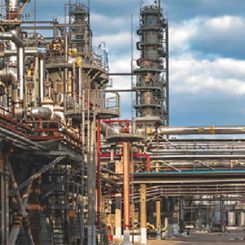Maintaining equipment uptime in a mining operation is essential. For one of South American's largest sulfurated copper mining organizations, unreliability simply wasn't acceptable, so they turned to one seal manufacturer to develop a pump sealing system improvement program using the Six Sigma methodology.
Tom Evans is the marketing manager at John Crane, 847-967-3875, taevans@johncrane.com.The mining company needed a seal manufacturer to help with significant process improvements. They chose a company with extensive experience in Six Sigma including training of more than 250 people as Black, Green, Yellow, Champions and Master Black Belts and the completion of more than 40 projects. According to Christian Luchsinger, mining sales manager for the seal company, the effort began in September 2005 with defining the desired improvements-optimizing water consumption, increasing the life of the components affected by the sealed system, increasing equipment productivity, improving recovery of material, as well as improving operational parameters such as the Mean Time Between Failure (MTBF) of the sealing system.
Approaching the project with teamwork was the key to success. According to the mining company's maintenance superintendent, customer participation helped validate the benefits of the new sealing systems and the use of the Six Sigma methodology provided confidence in the suggested sealing solutions. Using Six Sigma, the team moved through five stages of process improvement: define, measure, analyze, implement and control. Since the customer was involved for the entire project, the team had access to all of the necessary data and was able to validate the information and methodologies to find the optimal solution.
One of the outcomes of the project was the development of a new slurry seal prototype. According to Jesus Quintero, general manager of the sealing company, slurry concentration beyond traditional operational limits (more than 60 percent) is a common challenge that results in intermittent slurry availability and the seals running dry. The seal solution is a double-concentric sealing system that is integrally jointed to the pump's BRAKET "Cartridge-Style Bearing assembly," which avoids periodic axial recalibration of the seal, is closer to the bearing and minimizes the effect of the shaft deflection over the seal.
The collaborative resulted in great benefit for the user including:
-
92.7 percent reduction in operational and maintenance costs
-
100 percent increase in the pumping system production
-
Seal water consumption reduction from 400-liters/min to 20-liters/min
-
30 percent reduction of the total maintenance cost associated with the sealing system
-
Reduction of the environmental impact through elimination of the product emission to the atmospher
Luchsinger credits the Six Sigma methodology with the effectiveness of the sealing program solution.
"Engaging the customer in the problem-solving process as well as measuring the results in a way the customer can easily validate are two keys to success," said Luschsigner. "The Six Sigma methodology also enabled the team to evaluate the new sealing system using a cost-benefit analysis, not merely the initial price."
Jorge Correa is operations director for John Crane Latin America and is a Six Sigma Master Black Belt; 954-839-2704, www.johncrane.com.
Key Considerations |
|
Tom Evans, John Crane
|
| As we continue to dig deeper and in more remote areas, slurry pump seal support for companies in the mining and mineral processing industry becomes increasingly complex. With the nearest maintenance facility and personnel often hours away, it is crucial that seals perform without any support. That is why it is so important to consider all factors for selecting the right sealing solution for each environment. Key considerations include: |
|
|
Obviously, there are many other factors and criteria that further specify the optimal solution, but the aforementioned questions are key to beginning the selection process. |

